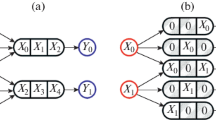Abstract
— In this paper, a Cellular Neural Network (CNN) has been applied to a magnetic regional/residual anomaly separation problem. CNN is an analog parallel computing paradigm defined in space and characterized by the locality of connections between processing neurons. The behavior of the CNN is defined by the template matrices A, B and the template vector I. We have optimized weight coefficients of these templates using Recurrent Perceptron Learning Algorithm (RPLA). The advantages of CNN as a real-time stochastic method are that it introduces little distortion to the shape of the original image and that it is not effected significantly by factors such as the overlap of power spectra of residual fields. The proposed method is tested using synthetic examples and the average depth of the buried objects has been estimated by power spectrum analysis. Next the CNN approach is applied to magnetic data over the Golalan chromite mine in Elazig which lies East of Turkey. This area is among the largest and richest chromite masses of the world. We compared the performance of CNN to classical derivative approaches.
Similar content being viewed by others
Author information
Authors and Affiliations
Additional information
(Received December 10, 1999, accepted December 24, 2000)
Rights and permissions
About this article
Cite this article
Albora, A., Özmen, A. & Uçan, O. Residual Separation of Magnetic Fields Using a Cellular Neural Network Approach. Pure appl. geophys. 158, 1797–1818 (2001). https://doi.org/10.1007/PL00001244
Issue Date:
DOI: https://doi.org/10.1007/PL00001244




